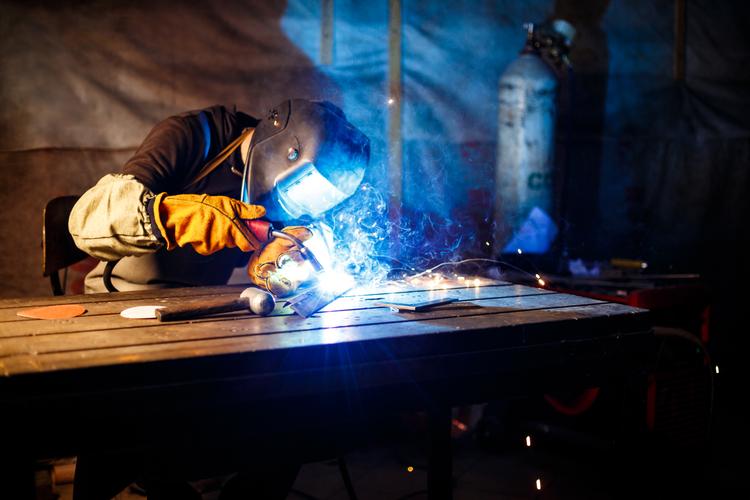
Different welding techniques used in welding
Welding is a critical process in metal fabrication that involves joining two or more metal parts together. There are several welding techniques used in the industry, each with its own advantages and applications. In this comprehensive guide, I will take you through the various welding techniques commonly used in Dubai, providing insights into their strengths and applications.
TIG welding: A precise and versatile welding technique
Tungsten Inert Gas (TIG) welding, also known as Gas Tungsten Arc Welding (GTAW), is a highly precise and versatile welding technique. It involves using a tungsten electrode to create an electric arc that melts the base metals and forms a strong weld joint. TIG welding is widely used in industries where precision and aesthetic appearance are crucial, such as automotive, aerospace, and jewelry manufacturing.
One of the key benefits of TIG welding is its ability to produce clean and precise welds with minimal distortion. This makes it an ideal choice for welding thin materials and intricate designs. Additionally, TIG welding allows for greater control over the welding process, as the welder can adjust the heat input and filler metal manually. This makes it suitable for welding a wide range of materials, including stainless steel, aluminium, and copper alloys.
MIG welding: The most commonly used welding technique in metal fabrication
Metal Inert Gas (MIG) welding, also known as Gas Metal Arc Welding (GMAW), is the most commonly used welding technique in metal fabrication. It involves feeding a continuous wire electrode through a welding gun, which melts and joins the base metals together. MIG welding is known for its speed and efficiency, making it a popular choice in industries that require high production rates, such as construction and automotive manufacturing.
One of the advantages of MIG welding is its ability to weld a wide variety of metals, including steel, aluminium, and stainless steel. It also provides excellent weld penetration and can be used in all positions. MIG welding is relatively easy to learn and master, making it suitable for both beginners and experienced welders. However, it does produce more spatter compared to other welding techniques, requiring additional cleaning and post-welding treatments.
Stick welding: A reliable and cost-effective welding technique
Shielded Metal Arc Welding (SMAW), commonly known as stick welding, is a reliable and cost-effective welding technique widely used in metal fabrication. It involves using a consumable electrode coated in flux to create an electric arc that melts the base metals and forms a weld joint. Stick welding is known for its versatility and ability to weld various metals, including steel, cast iron, and stainless steel.
One of the key advantages of stick welding is its portability, making it suitable for outdoor and remote welding applications. It can withstand adverse weather conditions and is not affected by wind or drafts. Stick welding also provides good penetration and is capable of welding thick materials. However, it requires more operator skill and control compared to other welding techniques, as the welder needs to manually control the electrode and maintain a stable arc.
Flux-cored arc welding: A versatile option for outdoor welding
Flux-cored arc welding (FCAW) is a versatile welding technique that combines elements of both MIG welding and stick welding. It uses a tubular wire electrode filled with flux to create an electric arc that melts the base metals and forms a weld joint. FCAW is commonly used in outdoor welding applications where shielding gas may be difficult to use effectively, such as construction and shipbuilding.
One of the advantages of FCAW is its high deposition rate, allowing for faster welding speeds and increased productivity. It also provides good penetration and can be used to weld thick materials. FCAW is suitable for welding a wide range of metals, including carbon steel, stainless steel, and low-alloy steel. However, it does produce more smoke and fumes compared to other welding techniques, requiring proper ventilation and safety precautions.
Choosing the right welding technique for your project
When it comes to metal fabrication in Dubai, choosing the right welding technique is crucial to ensure the quality and durability of the final product. Consider the following factors when selecting a welding technique for your project:
Material: Different welding techniques are suitable for different types of metals. Consider the material composition and thickness of the metals you need to weld.
Application: Determine the specific requirements of your project, such as weld appearance, strength, and joint configuration. Some welding techniques excel in producing clean and aesthetically pleasing welds, while others prioritize strength and structural integrity.
Skill level: Consider the skill level of the welder or welding team. Some techniques, like TIG welding, require more advanced skills and training, while others, like MIG welding, are more beginner-friendly.
Time and cost: Evaluate the production requirements and budget constraints of your project. Some techniques may be faster and more cost-effective for high-volume production, while others may be more suitable for specialized or one-off projects.
By carefully considering these factors and consulting with a reputable metal fabrication company in Dubai, you can ensure that you choose the right welding technique for your project.
Finding the right metal fabrication company in Dubai
In conclusion, exploring different welding techniques is essential in the art of metal fabrication. Whether you require precise and clean welds with TIG welding or efficient and versatile welding with MIG welding, understanding the strengths and applications of each technique is crucial. When selecting a welding technique for your project, consider the material, application, skill level, and time and cost requirements.
To ensure the best welding services in Dubai, it is important to partner with a reputable metal fabrication company. SAZ Steel Fabrication is a trusted name in the industry, offering a wide range of welding works in Dubai. Their team of skilled welders and state-of-the-art equipment ensures the highest quality and precision in every project. Contact SAZ Steel Fabrication today to get the best welding services that meet your specific requirements.
